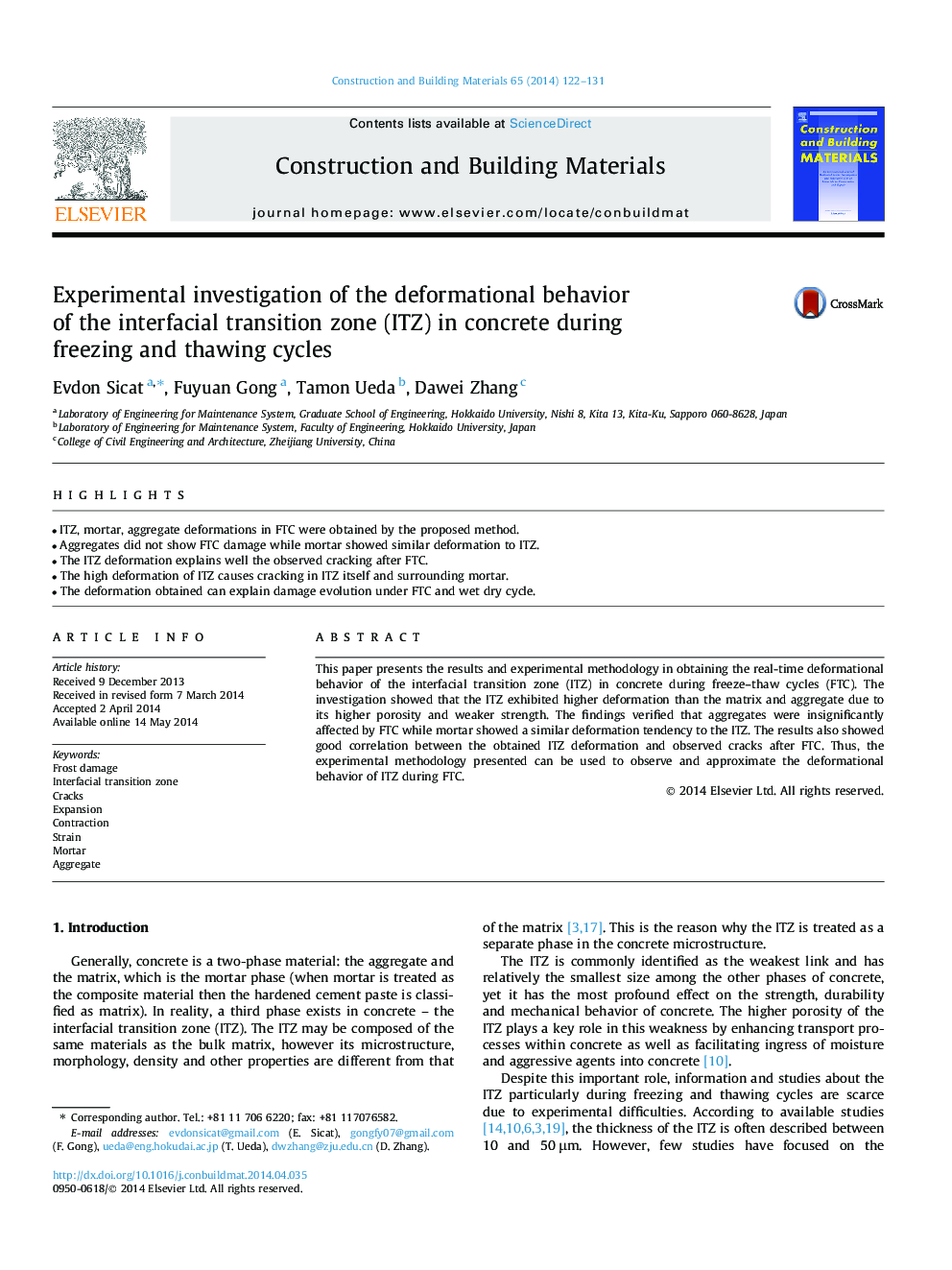| Article ID | Journal | Published Year | Pages | File Type |
|---|---|---|---|---|
| 257484 | Construction and Building Materials | 2014 | 10 Pages |
•ITZ, mortar, aggregate deformations in FTC were obtained by the proposed method.•Aggregates did not show FTC damage while mortar showed similar deformation to ITZ.•The ITZ deformation explains well the observed cracking after FTC.•The high deformation of ITZ causes cracking in ITZ itself and surrounding mortar.•The deformation obtained can explain damage evolution under FTC and wet dry cycle.
This paper presents the results and experimental methodology in obtaining the real-time deformational behavior of the interfacial transition zone (ITZ) in concrete during freeze–thaw cycles (FTC). The investigation showed that the ITZ exhibited higher deformation than the matrix and aggregate due to its higher porosity and weaker strength. The findings verified that aggregates were insignificantly affected by FTC while mortar showed a similar deformation tendency to the ITZ. The results also showed good correlation between the obtained ITZ deformation and observed cracks after FTC. Thus, the experimental methodology presented can be used to observe and approximate the deformational behavior of ITZ during FTC.
